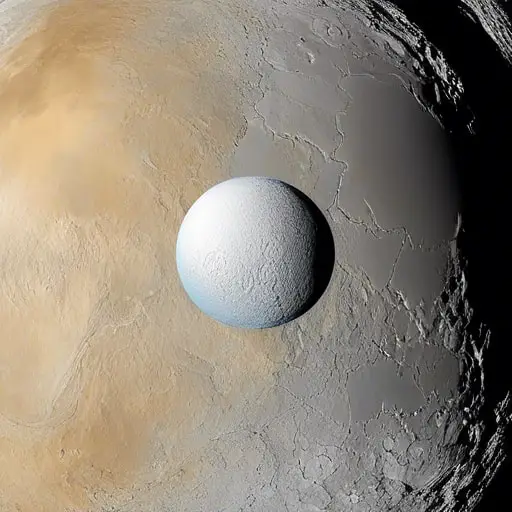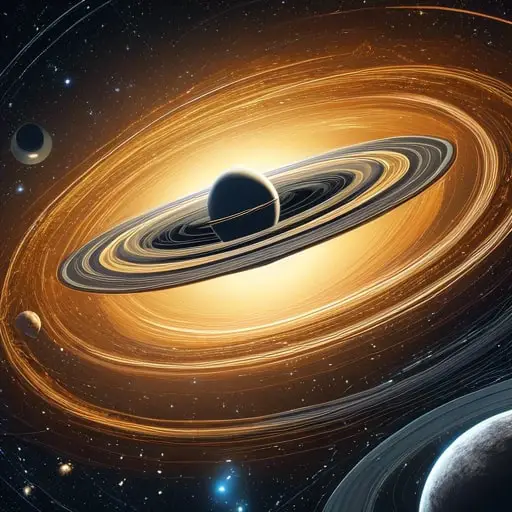How Is Pluto Similar To Earth?
Have you ever wondered how Pluto, the farthest planet from the Sun, could possibly be similar to Earth? While it may seem unlikely at first glance, there are actually several intriguing similarities between these two distant celestial bodies.
From their composition and atmosphere to their surface features and weather patterns, Pluto holds surprising resemblances to our own planet. But what truly captivates scientists is the possibility of geological activity and even the potential for life on this enigmatic dwarf planet.
Join us as we explore the remarkable parallels between Pluto and Earth, uncovering the impact they have on our scientific understanding of the universe.
Key Takeaways
- Both Pluto and Earth are composed of rock and ice, although Earth has a larger proportion of rock and a significant amount of water.
- Pluto’s atmosphere is mainly composed of nitrogen, with traces of methane and carbon monoxide, while Earth’s atmosphere is primarily composed of nitrogen and oxygen.
- Pluto experiences extreme temperature variations and seasonal changes in its atmosphere due to its elongated orbit and tilted axis, similar to Earth’s seasons.
- Pluto exhibits geological activity, including cryovolcanism and tectonic activity, which provides insights into its potential for life and enhances our understanding of planetary geological processes.
1.Composition
Pluto and Earth share surprising similarities in their composition, providing valuable insights into the formation and evolution of rocky celestial bodies.
Both Pluto and Earth are primarily composed of rock and ice, but their proportions differ. Pluto’s composition is dominated by rock, with a small amount of ice on its surface.
The rock on Pluto is believed to be a mixture of silicates and various organic compounds.
On the other hand, Earth has a larger proportion of rock compared to Pluto, with a significant amount of water in the form of oceans and ice caps.
This variation in composition suggests that the formation processes of both bodies differed, with Pluto potentially forming in a colder region of the solar system.
Studying the composition of Pluto and Earth helps us understand the diversity and complexities of rocky bodies in our universe.
2.Atmosphere
The composition of a celestial body influences its atmosphere, and in the case of both Pluto and Earth, their similarities in composition provide important insights into their atmospheric characteristics.
Here are some key points about the atmosphere of Pluto:
Pluto has a thin atmosphere composed mainly of nitrogen, similar to Earth’s atmosphere. However, it also contains traces of methane and carbon monoxide.
- The temperature on Pluto’s surface is extremely cold, averaging around -375 degrees Fahrenheit (-225 degrees Celsius). This low temperature affects the behavior of gases in its atmosphere.
- Pluto’s atmosphere isn’t as stable as Earth’s. It undergoes seasonal changes due to its elongated orbit and tilted axis.
- The atmosphere of Pluto is believed to be escaping into space at a slow rate. This is due to the weak gravitational pull of the dwarf planet.
3.Surface Features
Surface features on Pluto exhibit a diverse range of geological formations. The most prominent feature is the heart-shaped region known as Tombaugh Regio, which is made up of nitrogen ice. This region is surrounded by a dark, heavily cratered terrain called Cthulhu Regio.
Other surface features include mountain ranges, valleys, and plains. The mountains on Pluto can reach heights of up to 3,500 meters, similar to the Rocky Mountains on Earth.
Valleys on Pluto are believed to have been formed by the collapse of underground ice, creating a network of intricate channels. Plains on Pluto are covered in a layer of nitrogen and methane ice.
These surface features provide insights into the geological processes that have shaped Pluto over billions of years, making it a fascinating world to study.
4.Weather Patterns
As we explore the fascinating world of Pluto, it’s important to shift our focus from its surface features to its intriguing weather patterns.
Despite being located billions of miles away from Earth, Pluto exhibits some similarities in its weather phenomena. Here are some key points to consider:
- Pluto experiences extreme temperature variations, ranging from -375 degrees Fahrenheit to -400 degrees Fahrenheit.
- The dwarf planet has an atmosphere composed mainly of nitrogen, with traces of methane and carbon monoxide.
- Pluto’s weather patterns are influenced by its elliptical orbit, causing seasonal variations in temperature and atmospheric conditions.
- Similar to Earth, Pluto experiences distinct weather phenomena such as fog, frost, and even snow, although the composition and behavior of these elements differ significantly from what we observe on our planet.
5.Geological Activity
Pluto’s geological activity is characterized by a variety of dynamic processes that shape its surface. Despite being a small and distant world, Pluto shows remarkable similarities to Earth in terms of geological features.
One of the most intriguing aspects is the presence of cryovolcanism, or the eruption of icy materials from beneath the surface.
Just like Earth’s volcanoes, these cryovolcanoes release a mixture of gases and solids, creating unique landscapes on Pluto.
In addition, Pluto also exhibits evidence of tectonic activity, with large rifts and fault lines observed on its surface. These features suggest that Pluto’s interior is still undergoing active processes, much like Earth’s own tectonic movements.
6.Potential for Life
The geological activity observed on Pluto provides intriguing insights into its potential for life, as the dynamic processes shaping its surface may indicate conditions conducive to the emergence and sustainability of living organisms.
While the existence of life on Pluto is purely speculative at this point, several factors suggest that it could be a possibility:
- Presence of subsurface oceans: The presence of subsurface oceans on Pluto provides a potential habitat for microbial life, similar to the subsurface oceans on some of Jupiter’s moons.
- Energy sources: The presence of cryovolcanoes and geysers on Pluto’s surface suggests the availability of energy sources that could support life.
- Chemical building blocks: The detection of organic compounds on Pluto indicates the presence of the necessary chemical building blocks for life.
- Adaptability of life: Life on Earth has shown remarkable adaptability, thriving in extreme environments. If life exists on Pluto, it could have evolved to survive in the harsh conditions of this distant world.
7.Impact on Scientific Understanding
Studying the similarities between Earth and Pluto has greatly impacted our scientific understanding of the possibilities for life beyond our own planet.
By examining the geological features, atmospheric conditions, and potential for liquid water on both Earth and Pluto, scientists have gained valuable insights into the conditions necessary for life to exist.
| Feature | Earth | Pluto |
|---|---|---|
| Geology | Tectonic plates | Nitrogen ice |
| Atmosphere | Oxygen, Nitrogen | Methane, Nitrogen |
| Potential for Liquid Water | Abundant | Possible subsurface |
Analyzing the geology of Earth and Pluto has revealed that tectonic activity is not exclusive to our planet. Pluto’s surface is composed of nitrogen ice, indicating geological processes at work.
Furthermore, the contrasting atmospheres of Earth, rich in oxygen and nitrogen, and Pluto, dominated by methane and nitrogen, highlight the diverse chemical compositions that can exist.
Additionally, the potential for liquid water on both Earth and Pluto provides hope for the existence of life. While Earth is abundant in liquid water, recent discoveries suggest that Pluto may contain subsurface oceans, suggesting the possibility of hidden microbial life.
Studying these similarities between Earth and Pluto has broadened our understanding of the conditions necessary for life, expanding our knowledge and giving us a sense of belonging in the vast universe.
Frequently Asked Questions
How Far Is Pluto From Earth?
Pluto is approximately 3.67 billion miles away from Earth. Its distance varies due to its elliptical orbit. Understanding the vastness of space can help us appreciate the sheer magnitude of this cosmic separation.
What Is the Average Temperature on Pluto?
The average temperature on Pluto is extremely cold, reaching as low as -375 degrees Fahrenheit. This frigid climate is due to Pluto’s distance from the Sun and its thin atmosphere.
Does Pluto Have Any Moons?
Yes, Pluto does have moons. In fact, it has five known moons: Charon, Nix, Hydra, Kerberos, and Styx. These moons orbit around Pluto, adding to the complexity and uniqueness of this dwarf planet.
How Long Is a Day on Pluto?
A day on Pluto lasts about 6.4 Earth days, due to its slow rotation. This means that you would experience extremely long periods of daylight and darkness if you were on Pluto.
What Is the History of Pluto’s Discovery?
Pluto’s discovery history dates back to 1930 when Clyde Tombaugh spotted it. Belonging to the Kuiper Belt, it was initially classified as the ninth planet but later redefined as a dwarf planet.
Conclusion
In conclusion, while Pluto may be far smaller and colder than Earth, it shares some remarkable similarities.
Both planets have a rocky composition and atmospheres, although Pluto’s is much thinner. Surface features like mountains and valleys can be found on both worlds, and both experience weather patterns such as nitrogen snowfall on Pluto.
Furthermore, recent discoveries of geological activity on Pluto have challenged our understanding of dwarf planets.
These similarities highlight the vast diversity and complexity of our solar system, inspiring awe and curiosity in us all.










